Deng Xiaoping's Visit to NASA Johnson
As part of a historic 1979 U.S. visit, the paramount leader explored the world's leading space program.
In early 1979, as part of China’s opening to the world, Deng Xiaoping (邓小平), paramount leader of the People’s Republic, visited the United States for two weeks. As part of that trip in February, he made a stop in Houston, Texas, dropping into a handful of places, including NASA’s Johnson Space Center, the hub of the world’s leading space program.
At the space center, Deng was given a tour by Center Director Christopher Kraft and the first American astronaut, and then-senator, John Glenn, while being accompanied by his interpreter Ji Chaozhu (冀朝铸), his wife Zhou Lin (卓琳), along with a delegation of many Chinese and U.S. officials.
While touring the space center, Deng was given an overview of NASA’s crewed space program through explanations with scale models and simulators. Deng was given the opportunity to get hands-on with a model of the Apollo program’s lunar rover, a Moon rock retrieved during the Apollo program, and flew two landing attempts in the Space Shuttle simulator, practicing landing at a Pacific coast facility, guided by astronaut Fred Haise. Regarding Deng’s landings in the simulator, U.S. Ambassador to China, Leonard Woodcock, recalled1:
“Deng was fascinated … In that simulated vehicle, apparently coming in for the landing, he was so gleeful—I think he would have been willing to stay there all day.”
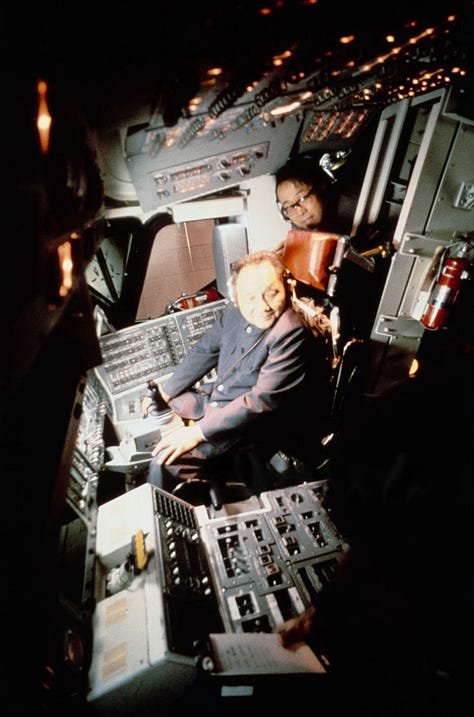
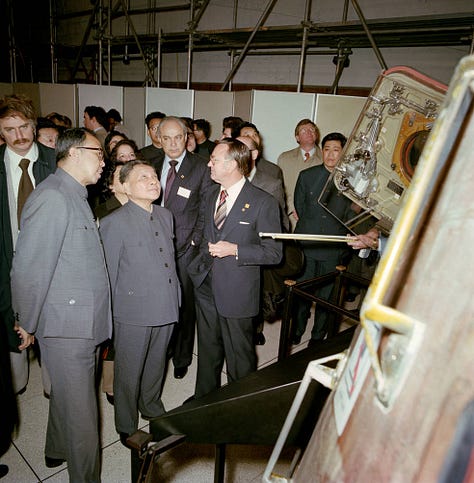
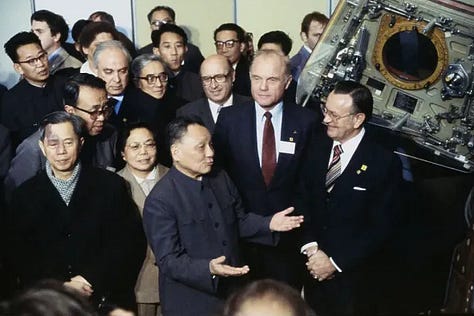
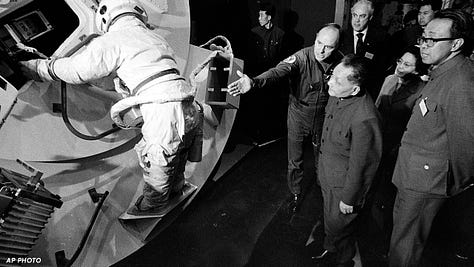
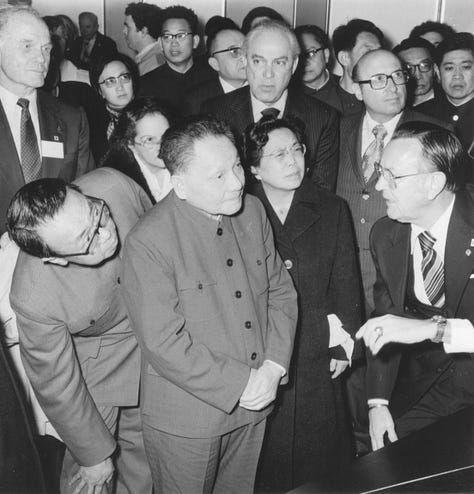
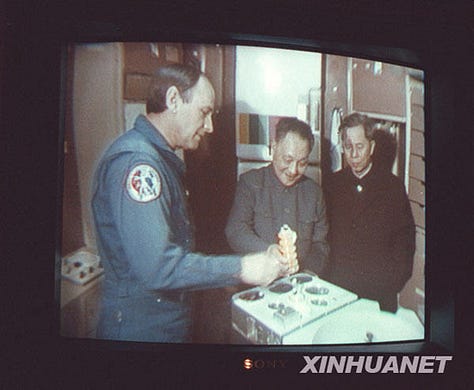
Other space items explained to Deng by relevant NASA officials were the Apollo Lunar Module and capsule, various types of rocks brought back from the Moon, the Skylab space station, and the then-in-development Space Shuttle system.
Following the visit to the Johnson Space Center, Deng Xiaoping began to envisage how China might catch up with its space program. That year, China performed one orbital launch attempt with a Feng Bao-1 rocket2, which failed during second-stage flight.
Today, China’s space program has arguably caught up to the U.S. space program in most respects, now performing Mars and asteroid exploration missions, regular crewed and lunar missions, set to deploy many reusable launch vehicles, and planning to land people on the Moon this decade.
Deng’s visit to the space center was part of a wider U.S.-spanning visit to assess American technological capabilities that could inform China's own modernization efforts, particularly in high-tech sectors where China was lagging behind following decades of isolation.
Page 344 of Ezra F. Vogel’s book Deng Xiaoping and the Transformation of China. ISBN: 9780674055445
The Feng Bao-1 rocket is almost entirely identical to the Long March 2 and was developed by what would become the Shanghai Academy of Spaceflight Technology for political reasons during the Cultural Revolution.




Very interesting! I didn't know about this event. Please write about the history of Chinese astronautics sometimes.
Interesting story! It's been a while since I revisited Vogel's Deng bio. Deng also gave his personal blessing to the 863 Program in 1986, elevating crewed flight and advanced launch vehicles to national priorities and paving the way for Project 921 and today’s commercial Long March services.